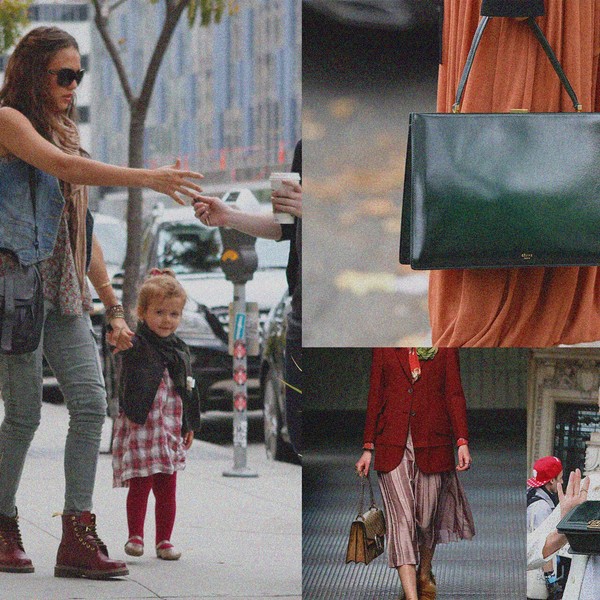Chelsey Bartrum Prefers Her Gemstones Imperfect
The founder of Starling blew up on TikTok after sharing the stories behind those one-of-a-kind stones.

“Have you ever heard of spinels?” Chelsey Bartrum asked me at her recent event in Brooklyn Heights. I had not. Apparently, it’s a secondary birthstone for August. “Colored gemstones are like the Wild West,” she later muses. Bartrum has built her jewelry line in that sector of the market, educating her devoted clients about the facets of the stones, process, and industry on TikTok. Bartrum began to share the stories behind her jewelry, the response to which incited a boldness in her designs that matched that of her collection alongside custom gem drops. “We've been able to share the story on TikTok very naturally and relate to people in a way we hadn't been able to do on Instagram,” she says. “Basically, over the past two years through social media, I have found this whole new community of people that are so unbelievably supportive of the brand.”

McGuire McManus
Bartrum did not come up through the fashion industry. She originally planned to be a nurse practitioner, but a reflective trip to Mexico shattered her conventional life plan. Infused with a new zest for life, she studied under a goldsmith in New Mexico, then attended trade school in midtown Manhattan, and later interned for jewelry brands in Los Angeles. Her first foray into launching a brand did not succeed, but Bartrum was now armed with the savvy to do so. Seven years ago, she launched Starling without a fashion rolodex or a massive social following. “I feel like a fashion outsider,” she says. “I think that jewelry is so much more. It's just so personal. And whenever people ask me, ‘How should I wear this,’ I'm like, ‘There aren't rules.’”
She now runs her DTC online-only offering out of a production studio in Los Angeles with a “family” of five in-house employees and a handful of various craftsmen. She’s embraced a more personal approach to jewelry design and reaped the corresponding benefits, staking her brand on the often misunderstood colored gemstone she prefers to wear in an imperfect state. “I think it tells more of the story of how the stone's grown over millions of years, and you can see those patterns and those pictures in the stone and have your own story about it, and it can tell your own story about the gem, and why you love it.” Ahead, I caught up with the jewelry designer while she was in New York to discuss the trials and tribulations of starting her brand, the complex network of colored gemstones, and her sense of style as it pertains to both design and expression.
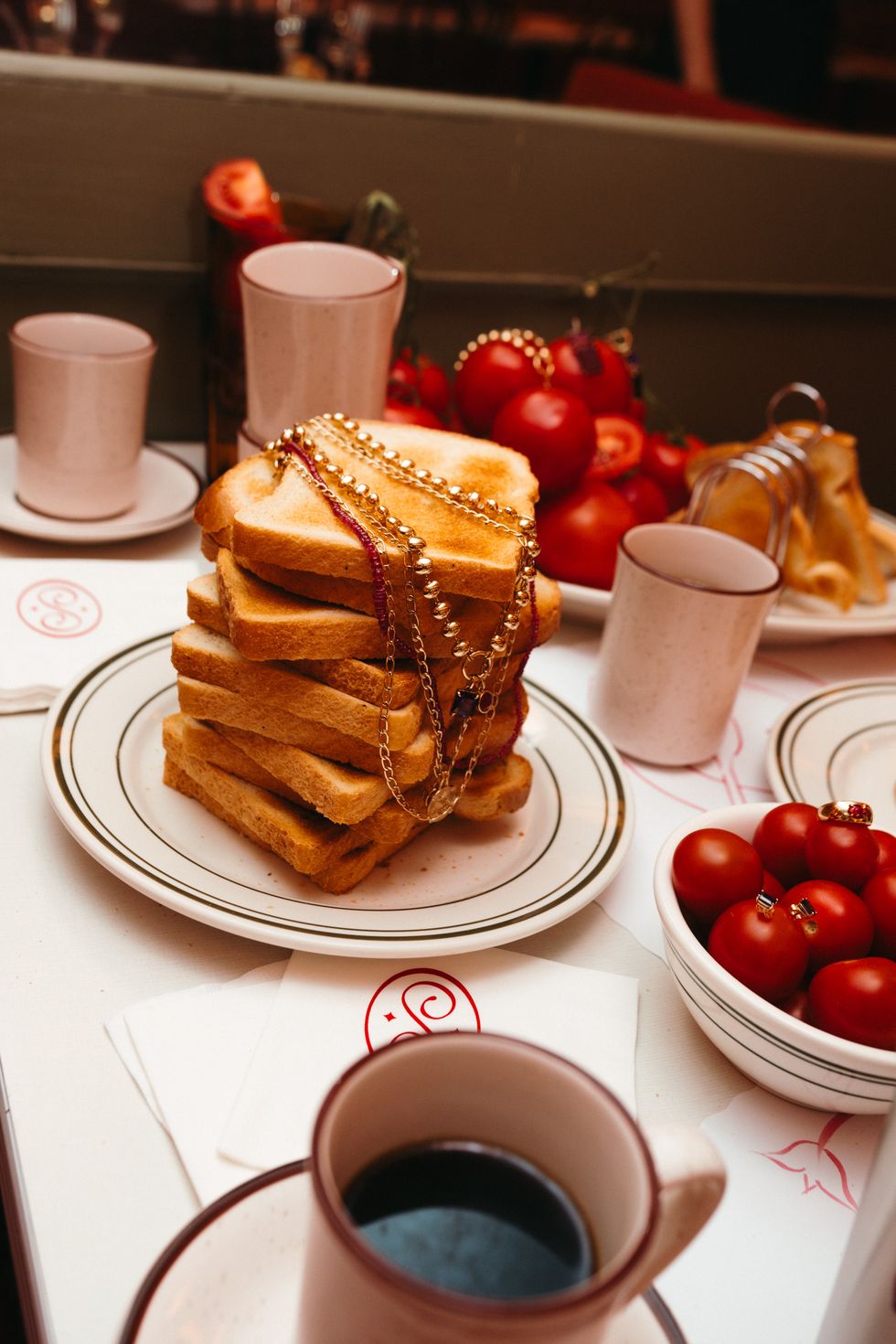
McGuire McManus
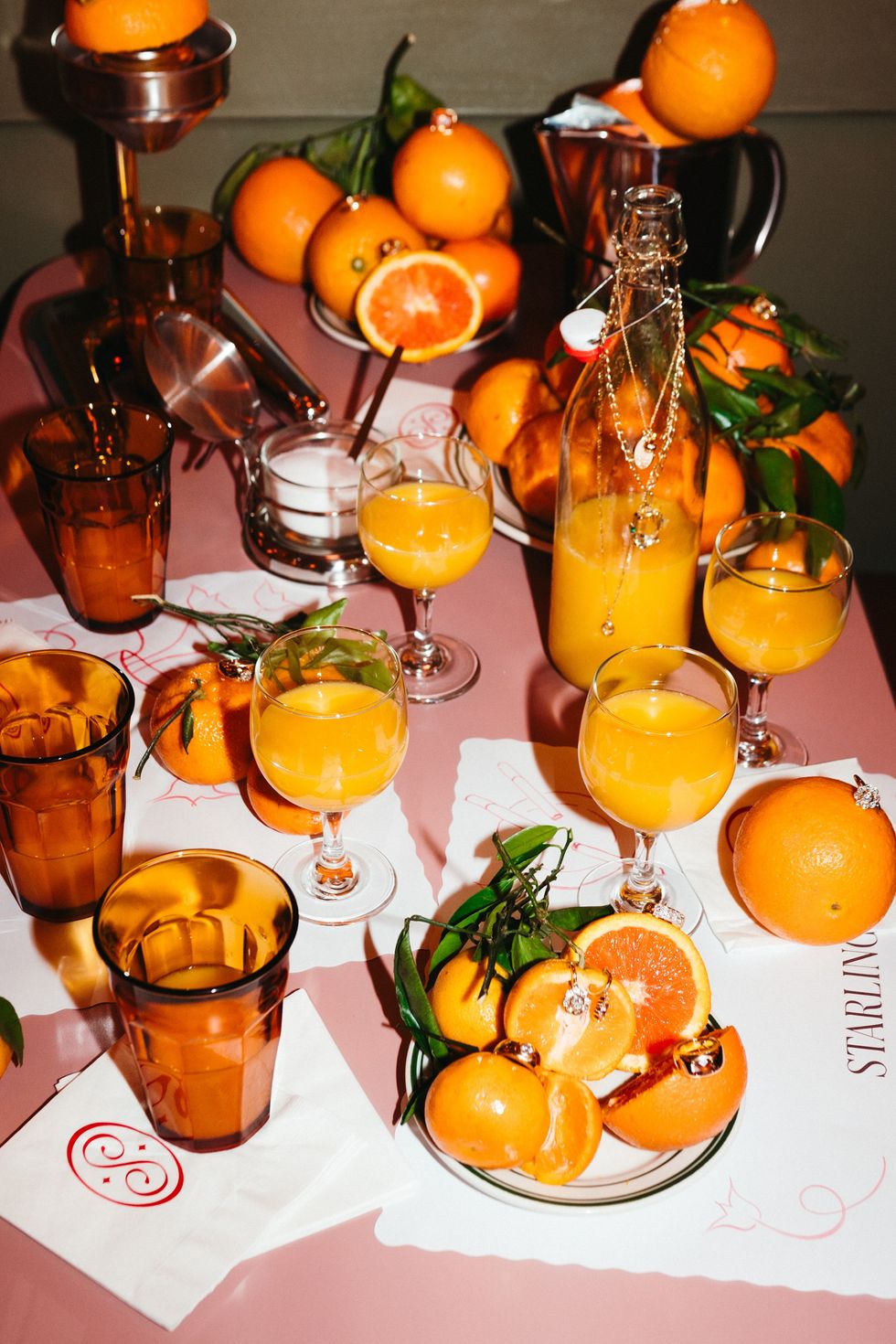
McGuire McManus
Coveteur: Have you always been interested in jewelry, or were you aesthetically inclined?
Chelsey Bartrum: “I started my jewelry journey when I was 13 because I'm from a very artsy, niche Vermont town. And there was a metalsmithing after-school program. And I was like, ‘Fire. Hammers. Amazing.’ I was doing little copper fish rings and stuff like that. I was actually in a metalsmithing class. I got to do metalsmithing in high school, which was so cool. I didn't realize until later how rare and amazing that was—an opportunity for an arts education in high school and earlier. Then I went to college and like the foray into arts was so hard and the creative world was such a difficult way to make a career. I never saw myself as a fashion girl, per se.
“Honestly, my first company did not succeed at all. So that was a good learning experience. I started Starling to make something that was easy to buy online for a wide age range of people but still very high quality. It's evolved so beautifully since the company started seven years ago. I have found this whole new community of people [on TikTok] who are so unbelievably supportive of the brand. It's opened the door to doing all these bespoke gems and custom pieces, which I never thought I would do. Probably the biggest compliment I get from customers is when they say, ‘Oh, I never thought I liked this stone,’ or ‘I never thought to put those two stones together,’ or ‘I always thought I hated my birthstone. I never knew about spinel or imperial topaz.’ Or ‘I never knew that a beryl was an aquamarine.’ I love sharing the unique and slightly different stones with people and having them be able to create their own piece.”
What brought you back into the jewelry world?
CB: “I was meant to go to nursing school and become a nurse practitioner. My husband had a change in his family, and I had just left my job in Boston, so we were like, ‘This is the time. Let's travel and do something.’
"We were in Chetumal, the capital of the Yucatan, with my godparents, who lived there then. And they were like, ‘You should do something that you're passionate about when you're 25 and not something that you think is safe because you have the rest of your life to go back to that.’ It was very scary, honestly. Seeing my godparents and how they had chosen to live their lives outside of the normal construct proved that could be possible for me, and that was so freeing. And then to have a partner who was also supportive and excited and on his own journey of doing something creative was really thrilling.”
How did you get your first experience?
CB: “Everywhere I've gone, I have just called people up and been like, ‘Are you hiring?’ Knocking on doors, cold calling. I've found really great people that way in New York, Santa Fe, and Los Angeles, and I am really lucky to have had the mentors and the influences that I've had in jewelry. I worked for this self-taught jewelry artist in Santa Fe. He was so giving and so kind. He put me on a bench, gave me all these tools, and was said, ‘Just play, have fun.’ He taught me all the skills he could, and put a lot of trust in me. It was a great environment, so open and friendly. I learned so much there.”

McGuire McManus

McGuire McManus
When you were starting Starling, how did you conceptualize what you would launch with? What those pieces would be?
CB: “I wanted stuff that was easy to buy online and could be gifted well. So we started with an emphasis on all ages, bracelets could be for a baby or for a grandmother. We had a range of sizes, and they were very simple bezel-set, single stones with a range of birthstones—more delicate, so the prices were affordable. I never sold in stores, so it was always direct-to-consumer. I imagined being able to gift something to your friend or your sister or your partner or whoever that they could wear and not have to take off, not think about, would go with everything, because that's important to me, with jewelry, that you actually wear it. It's part of your life and it's on your skin. It's going with you through the good and the bad.”
If you could connect the dots between your initial foray into the medical sphere and where you ended up, how would you do so?
CB: “The part of science that I always really liked was communicating with people in a way that they could understand. I always really liked sharing those classes with my friends who weren't science majors, like, ‘No, this is so cool because this atom and this atom are reacting, and that's how that happens.’ So, being able to share that element of jewelry with people, both in the scientific makeup of how stones and metals grow and how all those things come together, the alchemy of it is exciting to me.
“Also, a part of jewelry that I am very passionate about is helping people remake jewelry they already own. A big part of that is learning about where that came from. Sometimes, it's a fun and beautiful story. Sometimes, it's a heartbreak story. We've had people who have even sent photos of their great-grandparents' weddings and their wedding. It's so beautiful that jewelry can transform and transcend generations. I love that part about it, the sentimental sap I am.”
Were birthstones an entry point to colored stones for you? Or do you find a lot of people do that now?
CB: “I think they go hand in hand. Birthstones are a very easy entry into colored stones. I want the jewelry to have meaning for you, no matter what it is. And for a lot of people, that's through birthstones, wearing theirs or their children's or their partner's or their families’ or whatever it is. It's a way to have that person, time, or place with you at all times without having to say it. I also think you're attracted to what you need if you like a certain stone or it calls you in a way—without sounding cheesy—then you go for it.
“We've been doing these bespoke gem drops every month. We've narrowed it down to 10 stones every month that get released in the first week or so. They're just loose gemstones. Then, you pick one of three ring settings or a charm in your color, gold, and size. Then we make it for you, and you get to be part of the bespoke process. We send you 3D CADs to approve. We can further customize it a little bit if you want. And then keep you updated on where it's in the process of getting made. People have been collecting them. Sometimes, I'm able to have a lot of information on the stone, including the exact mine it came from and when it got mined. And sometimes they're post-consumer, so they're recycled. Sometimes, they're newer stones. They're all one of a kind. I think that's beautiful about larger colored stones. I am also attracted more to stones with more visible inclusions, which is a little bit rare for a fine jewelry line. You're more apt to see a cleaner stone. But I like the inclusions. I think it tells more of the story of how the stone's grown over millions of years; you can see those patterns and those pictures in the stone. and it can tell your own story about the gem and why you love it. There's some beautiful poetry in it.”

McGuire McManus
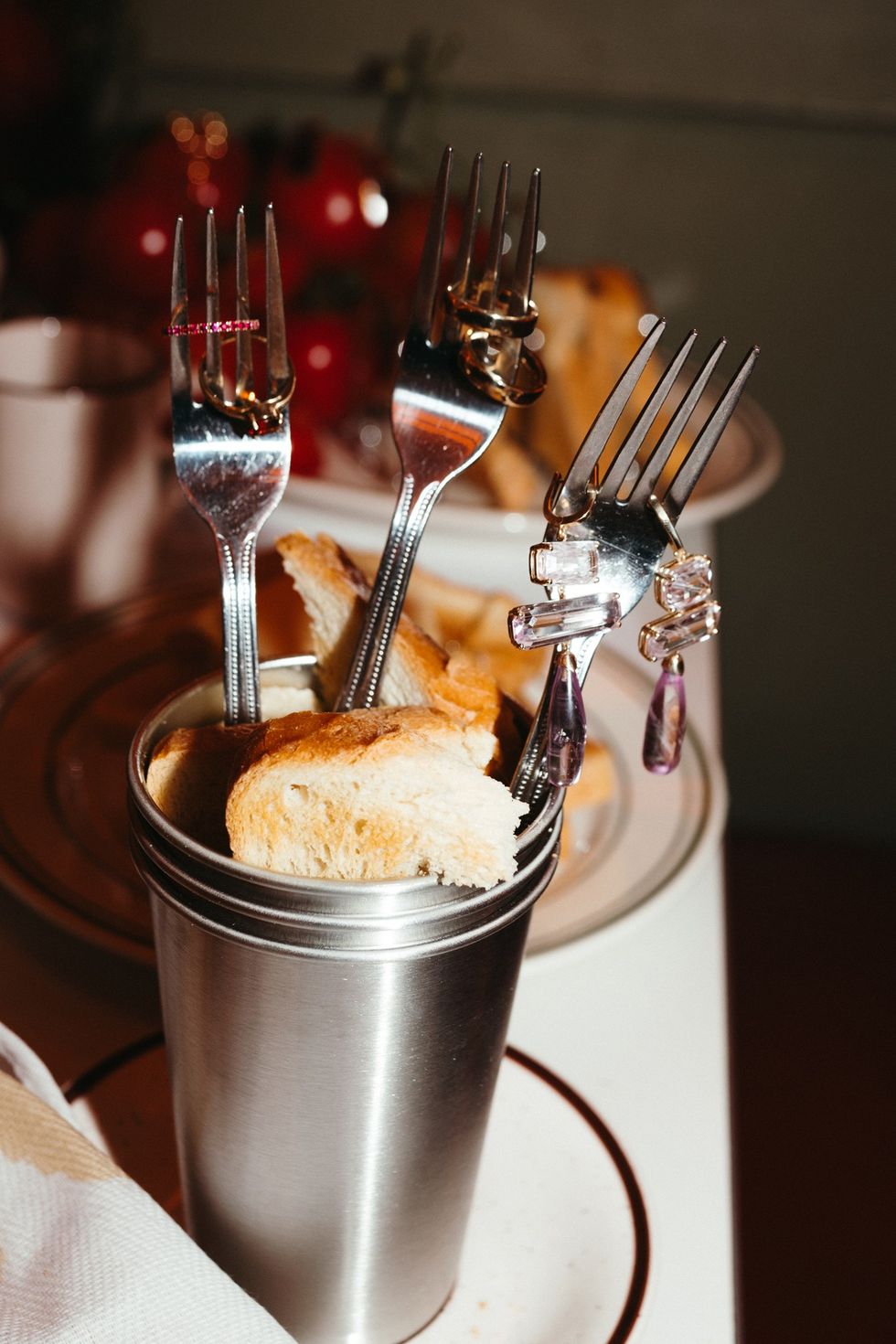
McGuire McManus
Did you always collect jewelry yourself? Did you start later? What's your relationship with it?
CB: “My grandmother was the impetus of jewelry in my life. She had a jewelry drawer in her guest room; that was the first place I went whenever I visited her. It was costume [jewelry], but it was all the daisy pins and the Swarovski necklaces. It was like treasure. What I also love about jewelry is that the value is something you put on it. My example is always that it could be a macaroni necklace that your kid makes or a five-carat diamond. It can have the same sentimental value to you and I really love that. As a kid, I used it as a sort of protection. I remember talking to the necklace that I wore and being like, ‘Okay, we can do this.’”
I want to ask you about your engagement ring. That came along before Starling?
CB: “A little bit before. I did not pick it. I had not imagined what I wanted in an engagement ring too much. I knew I wanted yellow gold and I knew I wanted something bezel-set. My husband is artistic and creative, and I liked seeing what he came up with. He worked with one of my old bosses and they created the ring together and it's my birthstone.”
Why did you decide to start sharing everything on TikTok? What were you sharing, and what the response look like?
CB: “We started sharing on TikTok about three years ago now. Probably two years ago, we shared my rings that I had made for myself—two rings I've been wearing for five or six years, and my engagement ring, which I've had for 10 years. In hindsight, it sounds very silly that I hadn't shared and that I never sold anything like them, but I hadn't. They now both have a lot of meaning. I've been wearing them for so long they're part of me, but also because one ended up being my daughter's birthstone, which is a very insane coincidence. And then this spinel is an alternate birthstone for August, which is my husband's. So it is perfect and beautiful, and I can't believe that it happened, but it did.
“So we shared what I had been wearing, and people loved it. So I decided to try bigger stones and see what happened. I did 12 rings. They were all different, all one-of-a-kind. There was one for every month, and they were all named after cool, creative people who were born in that month. There was the Julia ring for Julia Child in August and the Georgia ring for Georgia O'Keeffe in November. It was the first time I had done something bigger and in a higher range of jewelry. People loved them. I think that was also a movement in jewelry, towards bigger, chunkier jewelry, which started two years ago.
“At the same time, as most people in jewelry, I also have, a collection of loose gemstones I've gathered over the years. Some of them have sentimental values. Some of them are just beautiful objects that I love. We decided to [sell by the] loose stone [and custom design the setting]. We did our first gemstone drop to see, and I was pleasantly shocked. It's a big leap to imagine what the final piece would look like. We mock up little sketches of what this in a bezel-set or this in a prong-set would look like. This domed ring we call the cloud setting is probably one of the settings we're most well known for.
"So it all married together with us moving in that direction, like, ‘Of course this is what I should be doing because this is what I love about jewelry.’"
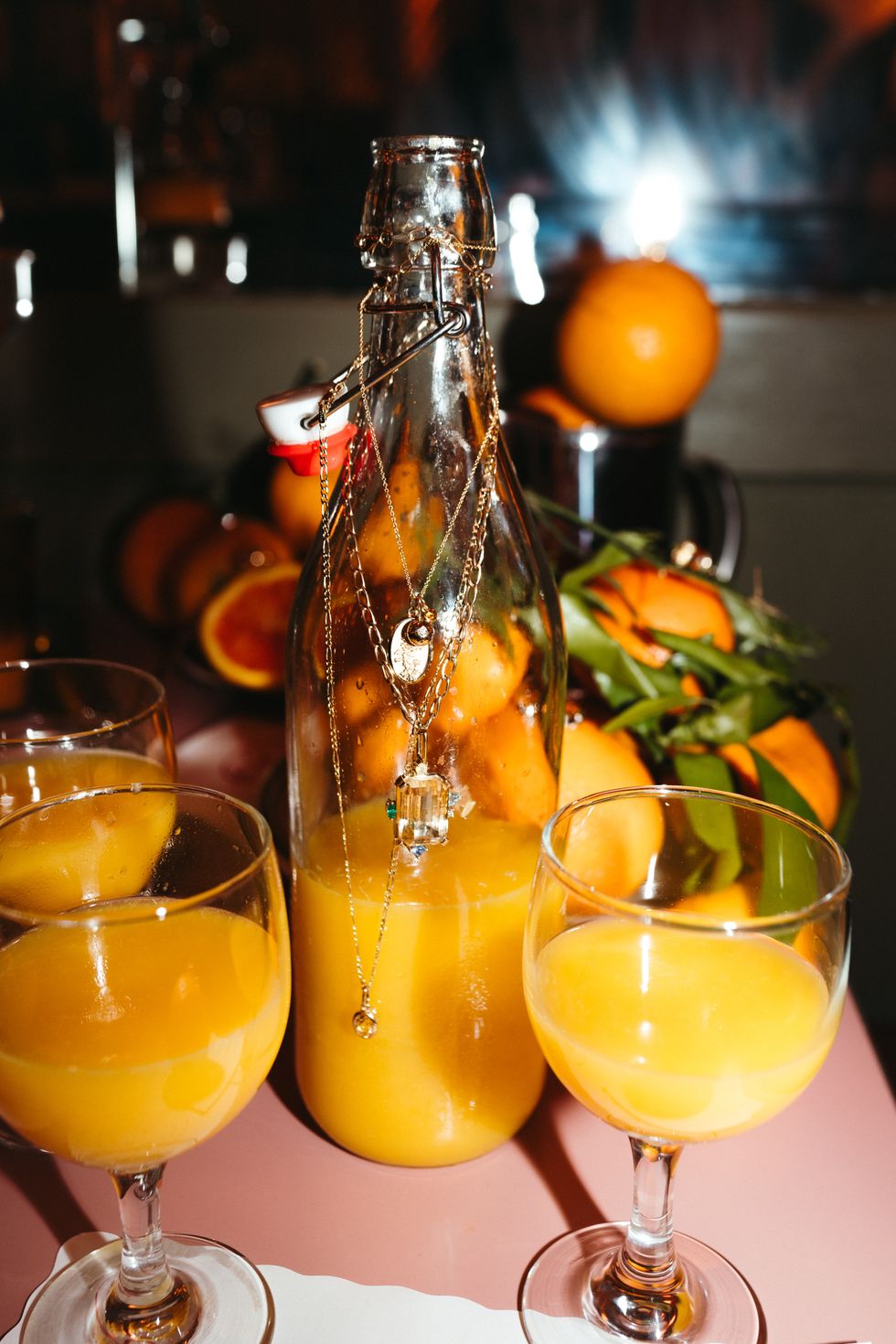
McGuire McManus
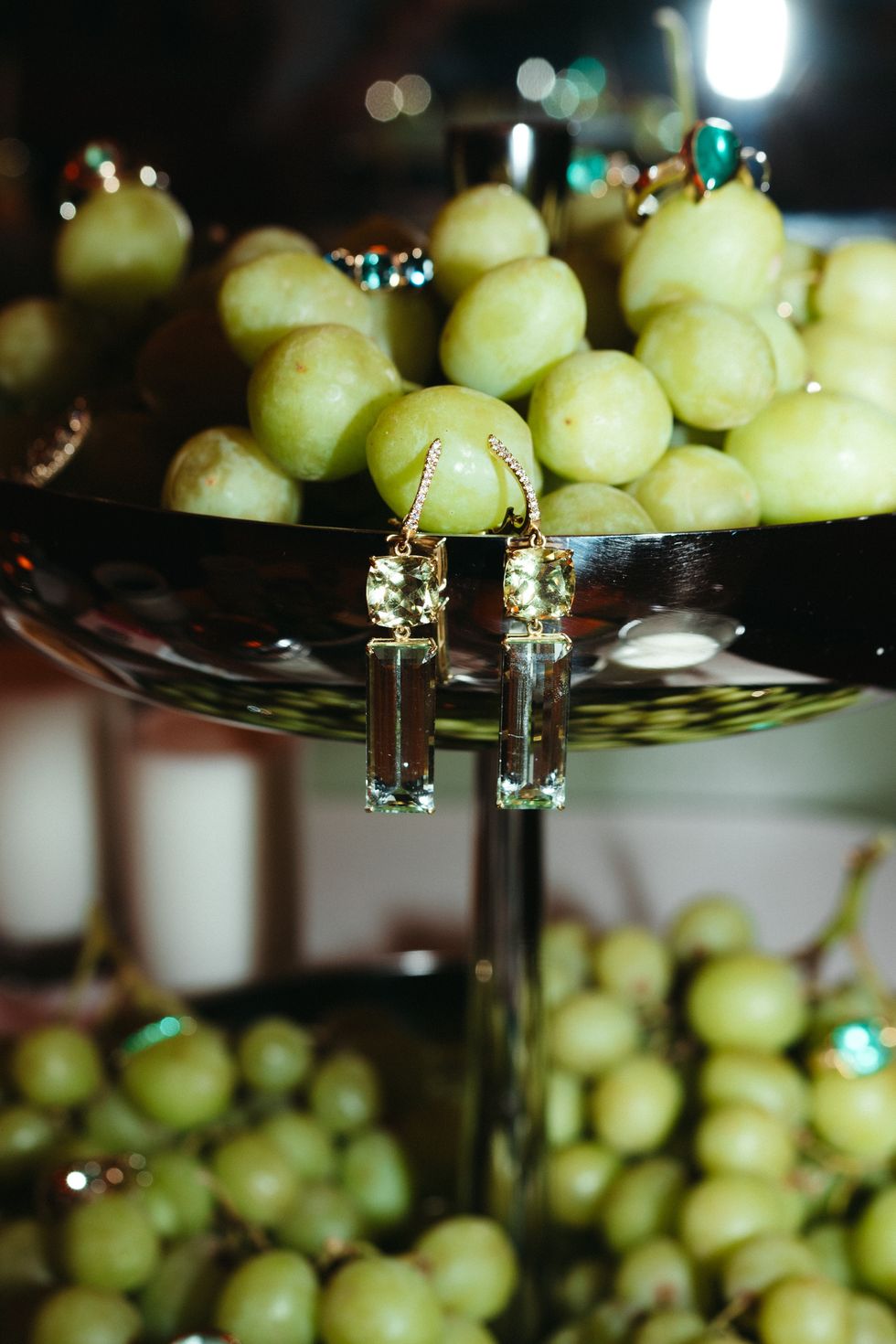
McGuire McManus
But where do you look for inspiration when looking at settings and all these tiny details?
CB: “I am very detail-oriented in general, especially with settings. So I always am thinking about the backs of the settings, the sides of the settings, or the parts that aren't visible from the top, and how those elements all work together. It is a little architectural project to build a house around the gemstone and figure out how to do that as cleanly and as simply but as elegantly as possible. I think that vintage pieces are beautiful, so [there is] probably some vintage inspiration from when I lived in New York. I would spend probably one day a week at the Met, just walking around. Or the rings that my grandmother wore every day. It’s also important to think through how something will wear over time. Will this be something you can give your grandchild? And in your every day, I don't want this to bend; I don't want this to break. I want you to be able to wear it and enjoy it without worrying about that. I also like nicks and scratches. I like when your jewelry is not pristine.”
You deal in big, bold, colorful gemstones. Do you ornament the rest of your life like that? For example, is your home maximalist or minimalist?
CB: “It's probably in between. Comfortable and colorful, but also minimal at the same time. I live in a loft in downtown Los Angeles. And I have to live with two other humans and two dogs. I like things in my home with meaning—there’s a story to everything. Some of them are just for my husband and I. And then there'll be a painting that was his grandmother's. There are rocks on our table, but they're rocks we picked up on our honeymoon. The table itself is a beautiful wood table, but the wood is from Vermont. All of those objects mean a lot to me.”
What's the educational process been like with colored gemstones? People know about birthstones, but what about the other gemstones?
CB: “Colored gemstones are like the Wild West. They don't have the structure that diamonds have, even in the industry. Diamonds have a report. There's a daily diamond pricing guide. There's a guide on quality. It's very regimented. The colored gemstones don't have that. Maybe higher-end gemstones do, but I'm more attracted to the gemstones that don't. I think that's really beautiful because then you get to put the value on it. And, honestly, pricing can depend on the vendor. It can depend on the mine. It can depend on the year. It's not a straight line. I don't think that monetary value has to always add up perfectly, because you, as the customer, decide whether you would pay that for it or not. And if that makes it valuable. I price it as what I got it for and try to do that as fairly as possible. Not doing retail allows me that flexibility to not to have to add in all the things that you would have to add in for retail. Metal is different because there's a daily price for that. And it’s the same with labor.
“Social has been great for teaching people, like, ‘Okay, this emerald is this amount because the color is this and the inclusions are this versus this emerald." You might think that this one is more beautiful, and that's wonderful. The price and the value don't have to be the same. It's just what you want, what you like, what you're attracted to. And I think that's a really fun part.”
Want more stories like this?
‘Travel Jewelry’ Is the New Aspirational Term In Our Lexicon
Have You Explored the Hermès Canvas Offering Lately?

